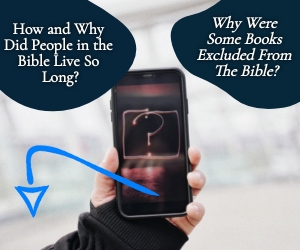Christians talk about Jesus being raised from the dead, but is there really any factual or historical evidence for it?
The Gospel
What is the gospel? After John was put in prison, Jesus came, saying, “The time is fulfilled, and the kingdom of God is at hand; repent and believe in the gospel” (Mark 1:15), so the gospel includes repenting of our sins and believing the gospel. In essence, it’s putting our trust in the Savior. Sharing the gospel message is most urgently needed in these days leading up to Christ’s second coming. Who knows? There may not be much time left, so that’s why sharing Christ is vitally important.
Of Vital Importance
The Apostle Paul says the gospel is “of first importance what I also received: that Christ died for our sins in accordance with the Scriptures, that he was buried, that he was raised on the third day in accordance with the Scriptures, and that he appeared to Cephas, then to the twelve. Then he appeared to more than five hundred brothers at one time, most of whom are still alive, though some have fallen asleep” (1 Cor 15:3-6). Paul includes in the gospel; Jesus’ life, death, burial and resurrection on the third day. It is those who believe this message who will be saved, for that belief includes believing that Jesus came to die and give His life as a ransom for them and others (Mark 10:45).
Eye Witnesses
The Jewish historian Josephus, who was not a Christian, still recognized Christianity as a major force in the first century. He recorded the fact that there were several hundred eye witnesses who say that they saw Jesus before and after His crucifixion, death, and resurrection. The Apostle Paul said the same thing in writing, “I delivered to you as of first importance what I also received: that Christ died for our sins in accordance with the Scriptures, that he was buried, that he was raised on the third day in accordance with the Scriptures” (1 Cor 15:3-4). That is the gospel of Jesus Christ. Not only had Jesus “appeared to Cephas, then to the twelve. Then he appeared to more than five hundred brothers at one time, most of whom are still alive, though some have fallen asleep” (1 Cor 13:5-6). That’s several very reputable eye witnesses there that are listed!
Historical Facts
But Paul’s not done yet because he says about the resurrected Christ, “Then he appeared to James, then to all the apostles. Last of all, as to one untimely born, he appeared also to me” (1 Cor 13:7-8). Paul is staking his very reputation by saying he had seen the resurrected Christ, and it’s highly likely that Paul had seen Jesus before Calvary too. The Apostle Paul and that list of eye witnesses lend enormous validity to the testimony that Jesus Christ was raised from the dead. Can you imagine Peter, Paul, James, and over 500 other eye witnesses all lying, and for something that wasn’t true? Josephus believed in Jesus’ existence, and he wrote, “At this time there was a wise man who was called Jesus. And his conduct was good, and he was known to be virtuous. And many people from among the Jews and the other nations became his disciples. Pilate condemned him to be crucified and to die. And those who had become his disciples did not abandon his discipleship. They reported that he had appeared to them after his crucifixion and that he was alive; accordingly, he was perhaps the Messiah concerning whom the prophets have recounted wonders.” [1]
Dying for their Faith
Most people would live for a lie, but few would die for one, so the death of the apostles by being martyred for their faith is evidence that they believed in Jesus’ resurrection and the gospel was no lie. And why wouldn’t they? They were eye witnesses to Jesus’ resurrection. If they knew it was a lie, then why would they suffer and die for it? It doesn’t make sense. The Twelve Apostles were either crucified, beheaded, tortured, stoned to death or hacked to death, so we ask again, would people live, suffer, and die for something they knew was a lie? Especially dying such horrendous deaths? I wouldn’t. Would you?
Tangible Evidence
It’s been said that there is enough evidence for the resurrection that it could be proven in a court of law. To begin with, there are dozens of written testimonies that declare Jesus’ existence as a tangible fact. The Apostle John wrote, “That which was from the beginning, which we have heard, which we have seen with our eyes, which we looked upon and have touched with our hands, concerning the word of life— the life was made manifest, and we have seen it, and testify to it and proclaim to you the eternal life, which was with the Father and was made manifest to us” (1 John 1:1-3). Notice three things here: John heard the message of Jesus with his own ears; John saw the miracles with his own eyes; and John touched the very God-Man Jesus Christ with his own hands, meaning He was like other men in form here on earth and was a fact of history. John testifies to what he heard, saw, and felt, and all three of those evidences are conclusive.
Conclusion
After Jesus’ resurrection, Luke the Physician says that Jesus “presented himself alive to them after his suffering by many proofs, appearing to them during forty days and speaking about the kingdom of God” (Acts 1:3), so Jesus was around for well over a month after His resurrection. Surely there were hundreds of others who saw Him during that time. For more reading on evidence of Jesus’ resurrection, see Luke 24:15-24, Act 2:31-32, 9:3, 17, I Cor 15:4-8, 2 Pet 1:16-21, and John 3:2, 15:27. If God has never brought you to repentance and faith in Christ, I plead with you to put your trust in the Savior and do so before you die (Heb 9:27), making today as the best day of salvation for you (2 Cor 6:2). That’s because tomorrow may not come with a chance of repentance and faith in Christ (Heb 9:27). Trust Him today, while there’s yet time.
1 Arabic summary, presumably of Antiquities 18.63. From Agapios’ Kitab al-‘Unwan (“Book of the Title,” 10th c.). See also James H. Charlesworth, Jesus Within Judaism.
Here is some related reading for you: Historical Evidence of Jesus Christ’s Resurrection
Resource – Scripture quotations are from The Holy Bible, English Standard Version® (ESV®), Crossway Bibles. (2007). ESV: Study Bible: English standard version. Wheaton, Ill: Crossway Bibles. Used by permission. All rights reserved









 Welcome to What Christians Want To Know! The mission of this site is to equip, encourage, and energize Christians. Look for regular updates including Bible Verses, Bible Stories, Christian Quotes, Christian Answers, and much more. Find out
Welcome to What Christians Want To Know! The mission of this site is to equip, encourage, and energize Christians. Look for regular updates including Bible Verses, Bible Stories, Christian Quotes, Christian Answers, and much more. Find out 









